- Inexpensive enough to afford it, light enough to have with you when you need it the most. Versatile, the Kit gun fills an important niche in the world of survival. It serves more roles than many other survival firearms.
- Survival food procurement is all about small game. Thus small-caliber handguns are great tools for food procurement.
- Be sure to consider your own needs before choosing a kit gun since many firearms can fill this role.
In the early 20th century, the kit gun was marketed as a lightweight .22 caliber revolver to fill the niche in what the outdoorsmen called a ‘kit bag.’ If you come from a Navy or Marine family, it was a sea bag. Otherwise, it’s a duffel, named after Duffel, Belgium, where the cloth used to make the first bags in the 1700s originated. Duffels were issued to non-commissioned personnel or purchased as surplus and saw wide use as a sturdy and convenient bag for camping, fishing, and other outdoor gear.
The traditional roles of the kit gun were:
- Fill the camp stewpot with a small game.
- Deliver the “coup de grâce” to wounded game animals and furbearers on the trap line.
- Recreational shooting.
- Euthanize injured horses and other injured animals.
- Slaughter livestock.
- Eliminate venomous snakes that could startle or injure animals.
- Control varmints that ate crops and dug burrows that could result in broken legs and the loss of expensive livestock.
- Self-defense, absent a more powerful weapon.
Marketed in 1953, Smith & Wesson’s handy .22 revolver was lightweight, easy to carry, and inexpensive to shoot. Since then, many gunmakers have introduced competitive designs to compete with S&W for the role of kit gun. In response, Smith & Wesson has refined the design and introduced other lightweight models.
Suitability as a Survival Weapon
Within its role, the kit gun is suited as a survival weapon. Their small frames keep their bulk and weight down, so you don’t mind carrying them. You need to have it with you when you need it. Compare to most firearms, kit guns can be held in pockets or backpacks. Rifles tend to get relegated to bags and vehicles, take-down or not.
While a pistol doesn’t have to be .22 caliber to fill a kit gun’s role, .22 ammunition is light, inexpensive (although not as it used to be), and plentiful.
Where I live, you’d be hard-pressed to pick a home that doesn’t have any .22 shells in it. That can allow you to barter for them in a pinch.
This ammo is also inexpensive and makes it possible for the survivalist to sock away plenty of ammunition even on a tight budget. When you eat what you shoot, you’d rather pay 2 cents/round than $2 a round. I bought most of my current ammunition stock at less than 2 cents, but today you have to pay double or even triple that. This low cost per round makes a .22 handgun a “must-have” in my book if only so you can keep your shooting skills sharp.
Survival food procurement
Let me be clear: it is all about small game. In the typical wilderness survival scenario, the last thing you want to deal with is a big game carcass. Moreover, there isn’t enough big game within the USA’s borders to feed the population or even a significant fraction of it for any length of time. If you’ve hunted big game, you have an idea how far you may have to travel to hunt, likely on foot, and then return with cured meat. In most areas, this is not doable. You might shoot a doe in your front yard the first day the grid goes down, but there will be a lot of pressure on big game further into a large-scale event.
Shooting small game or pests while doing homestead chores or traveling from A to B is another story. The smaller the wild game, the more biomass of food there is out there comprised of it.
Carry
I prefer to carry my S&W 317 in a concealed carry pouch that I have modified to fit both belts and MOLLE gear. The pouch doesn’t appear “tactical” in any way and has a smaller external pocket that is perfect for carrying a speed-loader or two and up to 150 rounds or so of loose ammunition.
Unzipping the pouch, the pistol is concealed underneath a fabric panel held in place by Velcro. That enables the same pouch to carry other gear that’s nice to have handy on your waist belt or pack belt. When I remove my pack, I move the pouch from my pack belt to my trouser-belt, so I don’t get caught without the pouch and its contents.
Noise Level & Energy
Noise is a significant consideration in a survival situation. If you are shooting first or signaling, you want a firearm to be loud. If you are trying not to bump into other two-legged critters, you don’t. A revolver’s advantage is that you can fire your choice of quiet or loud ammunition without a stoppage.
I carry very weak .22 LR ammunition such as Aguila’s Colibri line when I am doing discreet pest control or quietly filling the stewpot without alerting others in the area. This round features a tiny, 20gr projectile and contains no gunpowder. The bullet is propelled by the pressure generated by the primer alone. The result is that the round is quiet. It’s quieter than some air rifles and much quieter than you would expect a firearm to be and without the hassle of a suppressor. I can’t give you a quantitative measurement (and it would depend on the pistol and environment if I did), but I once shot a mouse that had fallen into a basement window well without waking the occupant of the room.
I also carry more powerful .22LR ammunition (for a .22LR) for hunting, signaling, or communicating. I don’t recommend .22LR as a self-defense round if you have a choice, but since it’s such a popular caliber, there is no shortage of data on it being used to shoot people. Assassins have favored the round, but they also try to shoot them at close range by surprise and want to get the job done without creating any more noise than necessary. I wouldn’t shoot a grizzly with one unless your life insurance is paid up, but the diminutive cartridge is plenty powerful enough to take small and medium game, even from a handgun.
Compact & Light-weight
Both the Kit Gun and the .22LR cartridge are about as compact and lightweight as it gets without compromising the ability to take game. It is compliance with the strict size and weight requirements of a survival kit that makes the kit gun so well-suited to survival use. Ideally, a kit gun should feature a small frame, a 3″- 4″ barrel, and a weight of around a pound or less. A little heavier is OK, but every ounce it weighs over a pound makes me want to leave it behind a little more. Survival gear is useless if you left it back in your truck because it was too heavy.
Accuracy
Accuracy is adequate for the role. I carried a Ruger MK II with a 5.5″ bull barrel for some time and it was certainly the most accurate gun I have employed in the role, but it was also the heaviest.
As barrel length increases, so does contact time with the barrel and sight radius, significantly impacting accuracy. The downside is that increasing barrel length also makes the pistol heavier and less fun to carry.
Finish
A consideration in choosing any survival weapon is a weather-resistant finish since they get toted around in all weather, in salt air along coastlines, and could even end up buried in a cache one day. Rust is the enemy of all handguns and should be given serious consideration when choosing weapons for survival.
Specific Kit Gun Models
Any number of small handguns with approximately 3″-4″ barrels are suited to a kit gun’s role, but here are some specific models to consider and a couple of others I would avoid.
I have had the pleasure of owning many models suitable for this role and have shot many more. In what follows, I will relate their main pro’s and con’s as I see them and the role and suitability of the kit gun for survival.
Ruger Bearcat
I learned to shoot as a small boy and was hunting by the age of eight. At that age, my spindly arms couldn’t yet heft a full-size rifle in the field. The solution was to reach for a model of kit gun manufactured by Ruger, called the Bearcat. The little gun was my constant companion for many years of daily and weekly hunting and scouting for archaeological artifacts and sites in the Sonoran and Mohave deserts. The little gun has harvested far too many cottontails and jackrabbits to count. The pistol decorated my room with rabbit pelts, fed me, and filled a small box with rattlesnake rattles, so I have no doubts about its reliability or suitability as a kit gun.
While the newer models of the same pistol have an enthusiastic following, the quality of manufacture of the old model Ruger Bearcat is immediately evident upon handling one side by side with modern production kit guns manufactured in the US. Newer models of the same handgun feel like they haven’t been dehorned.
Some shooters worry about the lack of a transfer-bar safety on the old six-gun. Ruger will convert them for free if you like, but the action won’t be as smooth. That is primarily a consideration in teaching children to shoot, but the Bearcat is often pressed into this role because its small dimensions are perfect for shooters with small hands. If you have large hands, you may prefer a model with a larger frame like the Ruger Single Six or the S&W 317 Air Lite Kit Gun. Some shooters prefer the newer Bearcats because they can swap cylinders to fire .22LR or .22WMR.
The old model Bearcat tips the scales at 17 ounces, has a 4″ barrel, holds six rounds, fixed sights, and is single action. The gun is tough as nails and has action as smooth as silk. When purchased, it cost was $50 and has served the family well since the 1960’s.
Smith & Wesson Model 317 Air Lite Kit Gun
The S&W 317 Air Lite Kit Gun is pretty evolved as kit guns go. The first time I picked up one, I was so surprised by its lightweight that I thought I’d picked up a plastic demonstrator for rubber handgun grips. At only 11.7 ounces unloaded, the 8-shot double-action pistol is scarcely heavier than a toy cap gun or water pistol. For backpackers, that seals the deal right there.
Since I bought mine back in the late ’90s, it came with the steel front ramp sight instead of the fiber optic sight they ship with now and I prefer it. I have had hunting companions that have the fiber optic insert fall out of their front sight while hunting on other weapons, so I try to avoid them. The adjustable target sights that top the pistol are outstanding. This pistol comes with a 3″ barrel and is an 8-shot double-action, so if you had to use it to defend yourself, you could pump out up to 8-rounds of .22LR as fast as you could pull the double-action trigger. Since the pistol features a swing-out cylinder, it can be reloaded using speed loaders, but that’s not the vast advantage it might seem at first glance. Since it’s a .22, you won’t be beating Jerry Miculek at the range any time soon because you’ll be lining eight little tiny bullets up with eight tiny holes (not because he’s better than you.)
All in all, it’s a great kit gun. Comparing the two pistols, both have impressively crisp triggers with zero creep in single action, although the Ruger has the narrow trigger you’d expect a single action six-shooter to have, and the S&W has a wide, smooth trigger. The action of the 317 can’t compete with the Bearcat and it’s somewhat bulkier, but the extra bulk is not necessarily a bad thing if you have big paws. But since the Bearcat is single-action and features a 6-shot cylinder and fixed sights vs. the S&W’s double-action, 8-shot, swing-out cylinder, and adjustable sights, the Ruger is slightly easier to carry in terms of bulk. People are amazed by its lightweight when they pick up this pistol. For me, the S&W 317 is the bigger deal on the trail and finds its way onto my belt more often than the Bearcat these days.
A trio of features is that pistols in the S&W 317 Series are somewhat rust-resistant, designed to take lanyards and are light enough to hang around your neck. That makes it easy to get your pistol up off the bottom of a kayak in a hurry and makes it possible to wade without worrying you’re going to dunk the sidearm. It’s also a decent gun in snake country down in the southern states, especially along rivers.
Reasons a shooter might choose an older, heavier S&W Kit Gun model is to get it in another caliber (such as .22 WMR, .32, .32 H&R Mag, .38 Special, or even .44 Special) with a longer barrel or just want a classic older model. I can understand that. If you live in bear country, you might even choose an S&W Mountain Lite in .357 Magnum, the S&W 329 PD Air Lite in .44 Magnum, or jump over to the Taurus Tracker in .44 Magnum.
Ruger “Mark” Series
These were all great .22 caliber pistols that saw use as kit guns. For survival use, I prefer revolvers for reasons previously stated, but the Ruger semi-auto .22s have nine or 10-round capacity and are both reliable and accurate. Because older semi-autos had to use more steel before the polymer frame’s advent, older semi-autos often weighed around twice the weight of revolver kit guns. If you choose a Ruger semi-auto from this series for a kit gun, I recommend the 22/45 Lite since it weighs 22 oz, over half a pound lighter than the target, threaded & hunter models.
Some SERE instructors favor semi-autos with dot sights. When hunting small game, more opportunities present at dawn and dusk. Lighted sights are easy to see in low light, but tritium sights accomplish the same goal and are more rugged and lighter. Dot sights are simple to shoot though, you simply put the dot on the target and pull the trigger. That may be an advantage to inexperienced shooters or shooters distracted by injury, cold, exposure, dehydration, hunger, or stress.
Colt Woodsman
Designed by John Moses Browning, the Woodsman was licensed to Colt and produced from 1915 to 1977, with a brief switch to target models during WWII. The pistol was well-liked, and Hemmingway was a fan. He even misguidedly recommended it as a fine choice for self-defense.
While the pistol was described in the Standard Catalog of Colt Firearms as a “near-perfect kit gun for the outdoorsman.”, at nearly 29 oz, the Woodsman is more than double the weight of a modern lightweight revolver and, like other semi-autos, will not reliably cycle .22 Short, .22 Long, low-pressure (quiet) .22LR or snake shot.
Browning Buckmark
The Buckmark is a blowback semi-automatic, is accurate and reliable, and underrated. At 34 ounces (just over two pounds), its weight is toward the upper limit of what I prefer in a kit gun, but not excessive. Capacity is typical at 10 + 1. Price is around $400 give or take $100, depending on the model, so that is why the Buckmark is somewhat underrated. It doesn’t stand out to the consumer on paper, but if you’re in the market for a semi-auto kit, I’d at least shoot one. You might like it.
Models to Avoid
- I.E. Lil Ranger – An FIE Tex 22 single six with a 6.5″ barrel was the second firearm I bought with my own money as a kid. I was putting a lot of rounds through firearms at that age and it didn’t last long. The company also made Lil Ranger single six with a 3.5″ barrel and a bird’s head grip that fit’s the kit gun description, but I would avoid it as it used mostly the same parts.
- Harrington Richards Model 900 – I owned one of these and would not recommend it. The action was rough and eventually the “hand” that advances the cylinder failed. Nevertheless, this model in the 2.5″ & 4″ barrel lengths are sometimes used in the kit gun role.


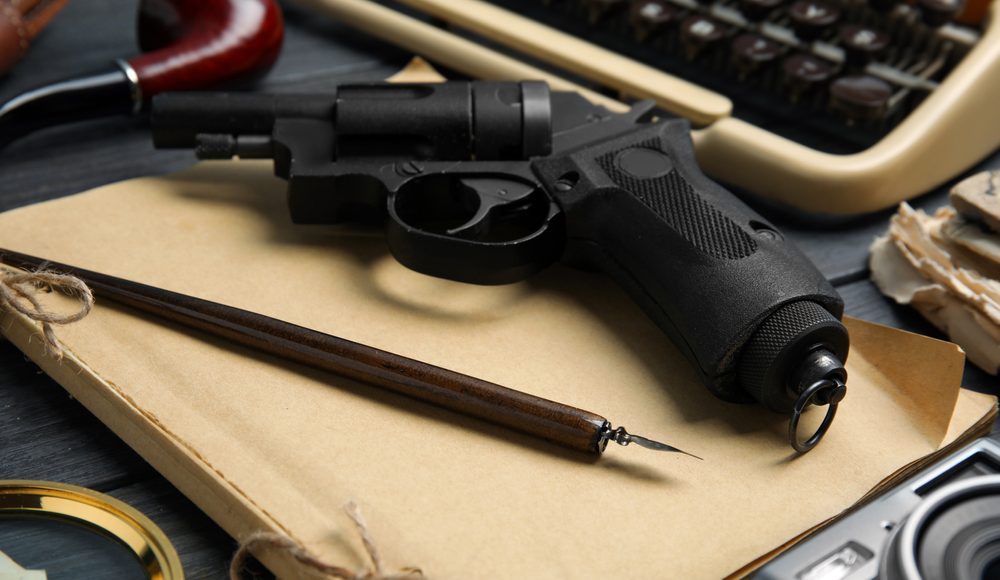
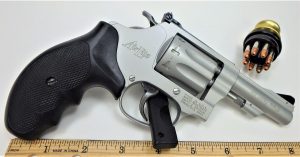

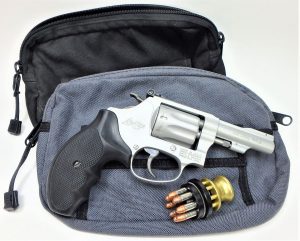
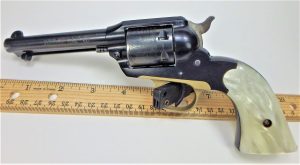

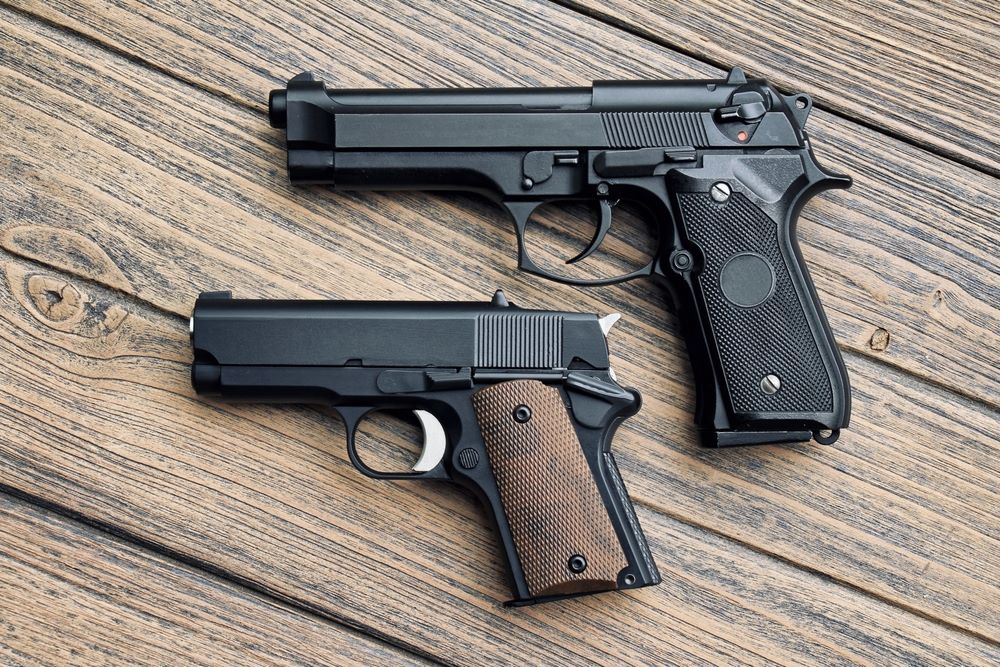
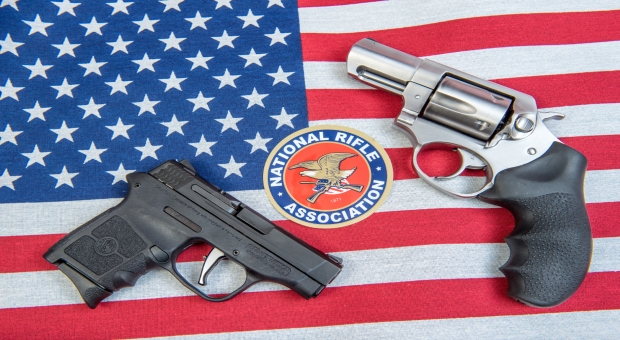
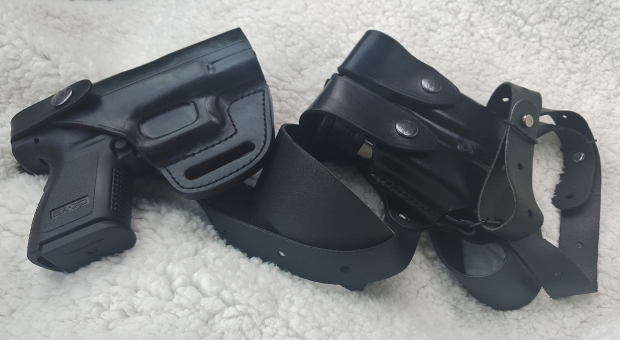
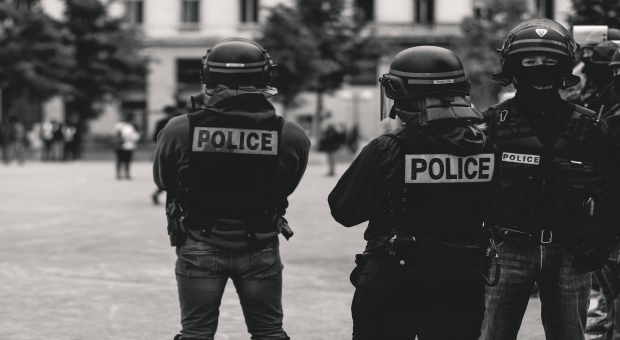

William Halford | February 5, 2021
|
I’ve never seen a handgun like the one in the picture at the top of the story. What is it?
Masterblaster | February 5, 2021
|
In the late 80’s- early 90’s, I bought a new Taurus .22 LR stainless steel kit gun in Charlotte, NC for less than $200. It has a 3 1/2 inch barrel, and is 9 inches overall, with nice hardwood stocks and a great grip. It’s double action and holds 9 rounds! Nearly 30 years later, it’s still in immaculate shape after spending some time in the woods, around lakes and streams, and in the glove box. Now it serves mostly as a home office “security system” with hollow points, in case of the unexpected. Taurus also gives a lifetime warranty for these guns, I believe… it’s a great gun to train neophytes, and it will pass on to an heir one day…
Kevin | February 5, 2021
|
A “kit gun” in .22 LR is a good idea, but I pack one with a bit more punch. It’s a Rossi M-69 in .32 S&W Long. It’s about the same size as nearly all .22 revolvers, but in .32 Long, packs a bit more punch, but it’s not much louder. Yes, factory ammo is overpriced for it, but that’s why I reload. With 100 grain wadcutters, it will waylay any small game with relative ease. Plus, any two-legged predator would get a nasty surprise, too.
Chris | February 6, 2021
|
I have owned a couple of the original 6 shot S&W 22-32 .22LR kit Guns w/2″ barrels. These were beautifully made and had great smooth actions. I was never steady enough to use the 2″ barrel with good results. I have owned both Ruger fixed sight Single Sixes and Colt Frontier Scouts in .22LR. These were smooth and accurate, but because they were old type (Colt Peacemaker) single actions they had to be carried with five cartridges in the cylinder and an empty chamber under the hammer. I have owned Ruger Mk. I, II, & III semi auto pistols with 4 3/4″ barrels. It is about the best for the job. I own a Mk. III currently. It has too many lawyer proof features. I wish it was a Mk. II. I have owned a Colt Woodsman and currently own a mid 1950s Colt Challenger in .22LR. A Challenger is a Woodsman with fixed sights and no slide stop similar to a Huntsman. I have a late 1950s S&W K22. It is probably too big to be called a kit gun. A kit gun size pistol I really like is a SIG P230 in 9mm Kurtz (.380ACP). With Lehigh ammunition it is good for self defence against humans who mean you harm or varmints on the trail. Lastly, and truly kit size, I love my Astra Cub in .22 Short. With CCI .22 Short Stingers it is almost as powerful as a .22LR. I would NOT want someone to shoot me with one of those! The Cub is the size of a Baby Browning .25 Automatic. It is for short range use. My Astra Cub was made in 1958 and is in almost mint condition. That Cub is fun to shoot, and is quite a challenge. Please note… Every semi automatic pistol I have ever owned has always been accompanied with two or more extra magazines. I could NOT recommend anything by Tarus.
deadwaters | February 6, 2021
|
4 cents a round for .22? Been on line lately? it’s closer to 25cents a round now…
alfie | March 30, 2021
|
When and where you can find it and have enough money to pay for it
alfie | February 8, 2021
|
Hmm, just picked up a box of CCI ” clean ” .22lr, a 100 rd box for $15.99. but having said that I also ran across aquila box of 50 round nose lead for $ 3.99. . but a few yrs ago I picked up a charter arms pathfinder in .22 lr ? .22 m, use dit to put down sick cats, and varmints ( shucks, coons, possum and a couple of times had it with me deer hunting.) Traded a GSG 522 even up for it ( I think I got the better of the deal as I’ve used it a lot more often than I would have used the gsg 255 and not having to explain to the DW ) I also have a bersa in .22 that works really well.